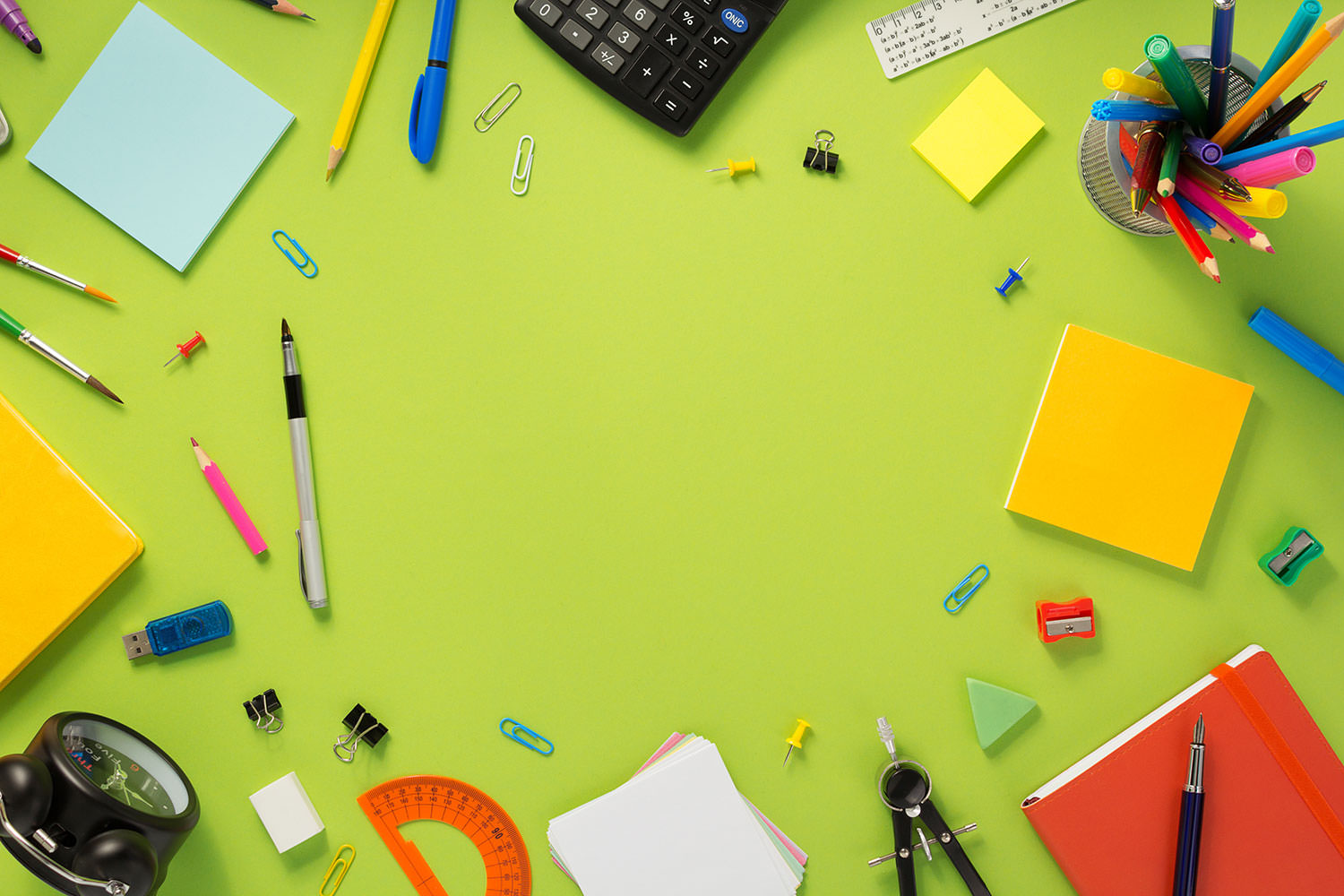
Facebook recently showed a picture of me as a special education teacher in my very first classroom almost a decade back. When I looked at this image, all I could focus on was all the stuff. Every single inch of space on the wall was covered with education posters and world maps, and every corner was filled with furniture and classroom supplies.
I remember how I accumulated so much in such a short amount of time. I was a teacher’s aide for about four years before I became a teacher on the same campus, so most of the teachers already knew me. My mentor teachers were kind enough to help me create a fun and whimsical classroom environment that first year. They let me choose from their drawers of decorations. They donated tubs of art supplies, board games, bubbles, sidewalk chalk, and more. I was given exercise balls, trampolines, and sensory items for classroom management. And as a collector at heart, I added to the classroom by purchasing even more from garage sales, thrift stores, and department stores with my first month’s teacher’s salary.
The spending didn’t stop there. Every year, teachers of students with moderate to severe disabilities were given a few hundred dollars for their classroom. So, we bought new supplies and on top of that, scrounged for more materials. We asked for donations, organized fundraisers, or spent money out of our own paychecks just to fill our classrooms to make it look like a greater place for learning than the year before. Though some of us purged old stuff during the summer, we would immediately head to Target and purchase even more than what we threw out. It was a cycle which left many teachers with classrooms full of junk. By my third year of teaching, I had accumulated close to three whole classrooms full of toys, supplies, games, and other classroom supplements.
One would think we had more than enough, but every year my fellow teachers in the district complained about not having any money for classroom needs. I would look around my own classroom and wonder why I felt the same way despite it being so full.
• • •
Then I learned about Adam Braun, an entrepreneur who started a nonprofit organization called Pencils of Promise. His whole life changed when he asked a young boy in India what he wanted if he could have anything in the world and he said, “A pencil.” To be honest, this story changed my thinking, and I began to look at my classroom in a different way.
I first looked back at my own educational experiences and environments and tried to figure out what worked for me and what didn’t, which teachers were my favorites and which ones were not. I noticed a trend — it wasn’t about the decorations teachers had on the wall each thematic lesson or holiday. I could hardly remember those. It wasn’t about how many games or supplies the teacher had accumulated. What I remembered were the teachers themselves: what they said, how they treated me, their passion for the subject, the way in which they explained their topics, how creative they were when they taught.

One of my favorites was my first grade teacher at St. Joseph’s College in the Philippines. I remember the classroom windows and bare walls (except for a chalkboard and some chalk). I remember having little to no classroom materials, yet somehow we memorized the entire multiplication table and wrote and recited long poetry. What I felt was most effective was how nice and patient my teacher was when she taught us math and literature, and that she believed in us and in what we could accomplish. We worked and studied hard because she gave us the confidence that we could do anything we set our minds to.
• • •
I began to reimagine what it meant to be a great teacher and ways to be effective without continuing to feed into our environmentally-denigrating, capitalist society. I began to look within myself and make peace with me having hoarded so much while students in other places barely had a pencil. I had to reexamine my own classroom and figure out what I was going to do the following year. Did I really need more products from the teacher supply store? Did I need a new line of office supplies to change my décor or desk motif? Did I need more supplies made of plastic?
I decided on figuring out what it took to have a more “conscious-classroom”. I knew I had to revitalize the creativity within me. If I really needed supplies, were there environmentally-friendly products I could find or purchase? Could I find materials within nature (such as sticks and leaves) that would have the same effect as store-bought manipulatives? Could I plan lessons to where I would never have to buy new materials again?
A little while later, I started a minimalist approach to teaching. I found that I could use resources that were online or better for the environment, including some Montessori and Waldorf eco-friendly/long-lasting materials. I found creative ways to teach without having to waste money, such as borrowing from Forest Kindergarten ideas. This freed up more of my time for teaching rather than accumulating, fundraising, accepting donations, and even cleaning more junk in my own classroom.
I didn’t think that all classroom materials were bad and that we should get rid of them. I understood the wonderful benefits of assistive technology devices for students with disabilities. I also wasn’t trying to convince myself that teachers who had an abundance were not good teachers. There were plenty of art teachers, STEM teachers, etc., who did some fantastic teaching and harnessed creativity using a number of materials. At the same time, I wasn’t under the impression that minimalist teachers were the best teachers either. There was no one-size-fits-all answer.
What I was trying to change was myself and my own classroom and what I was spending my time and energy on. I wanted to be more conscious of what I was buying or accumulating. I no longer wanted to fight to increase my own classroom budget to purchase more “throwaway items”. I had these privileges of owning piles of materials I wasn’t using while more donations and fundraising opportunities came my way.
At that point, continuing to ask for more would make me another case of “the rich getting richer while the poor remained poor”. Honestly, I collected and fought for more money because I thought our students were being overlooked and underfunded. In reality, not only was I being wasteful, I was also overlooking kids in our world community who didn’t even have the basics. I needed to take responsibility — first in learning about the true needs of others, second in being grateful for what I already had (and knowing what it really took to be a good teacher), and third in fighting for equality in classrooms. In the U.S. alone, that meant having culturally-sustaining pedagogies and closing the achievement gap. For other countries, it meant talking to people in their communities and perhaps sharing our abundance of pencils and other materials if they wanted us to.
• • •
I was recently asked what I would do as a teacher if I had all the funding in the world. I would flip that around and ask what I would do as a teacher if I had absolutely no money. This reminded me of Jesus as a teacher and his simplicity. How did he teach so many people in the most profound and enriching ways? What can we learn from him and how he taught marginalized people? He was rejecting an oppressive society while at the same time elevating those who were oppressed. How can we use his examples to focus on what’s most important rather than perpetuating our capitalist system?
Overall, we may not have the answer to the problems in our education system or capitalist consumerist society, but we can at least look to Jesus to help us head toward the right direction. He mentioned getting rid of all our possessions and following him. While most of us wouldn’t be able to commit, we can at the very least be more grateful for what we already have while being conscious of the way we spend — not just teachers in classrooms, but all of us in general.

Maika Llaneza is a Filipina American writer, teacher, and monster fanatic. Her stories can be found in the January 2020 Cover Feature of Sojourners Magazine, Inheritance Magazine, HelloGiggles, State of Formation, Stories with Sapphire Podcast, Healing the Unknown, and a new episode of Spooked Podcast. She was a State of Formation Interreligious Writing Fellow, a conference presenter at the Biennial Filipino American National Historical Society (FANHS) Conference, and an upcoming debut kidlit author. She is currently an Exceptional Student Services Teacher at a French Immersion School in New Orleans, LA.